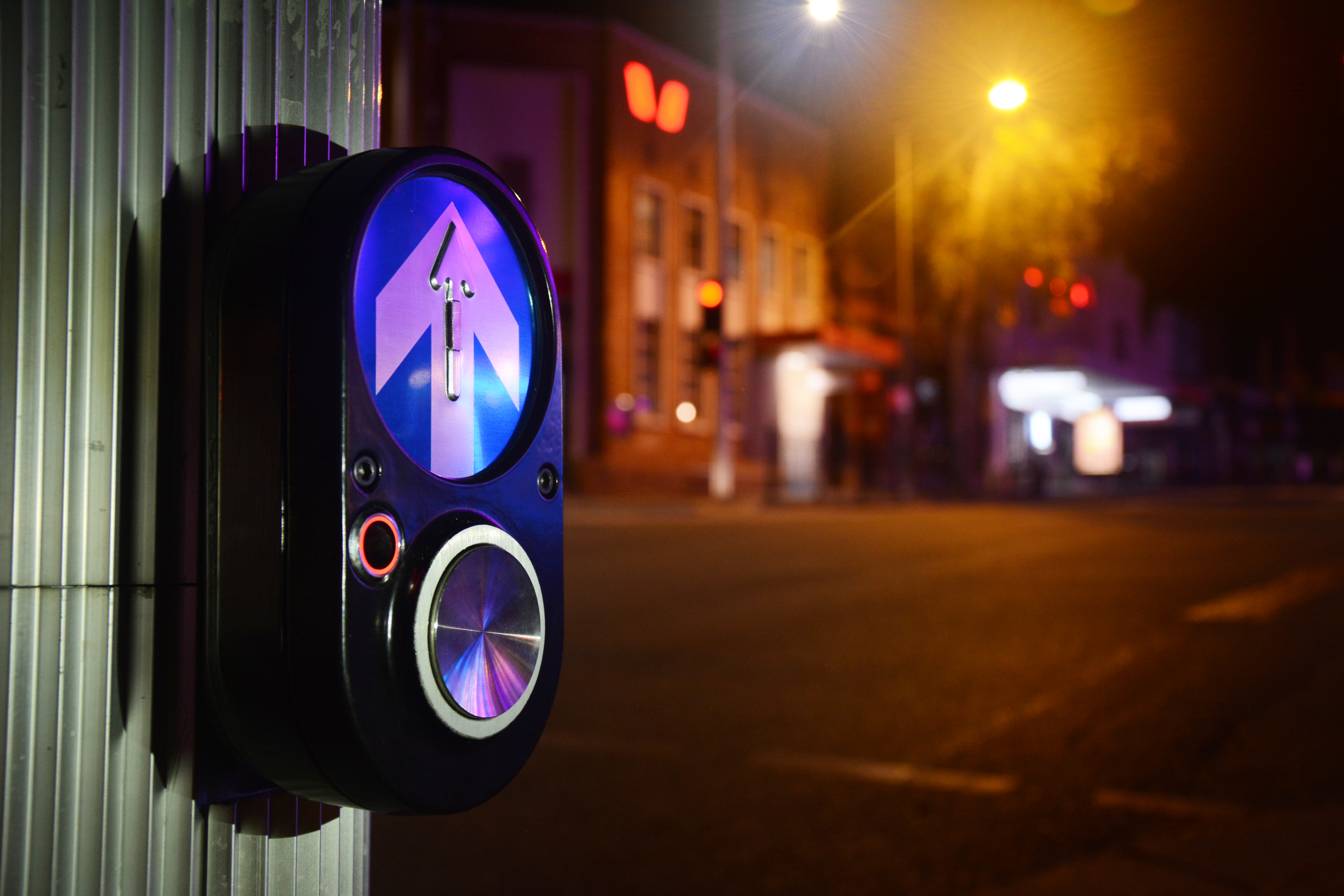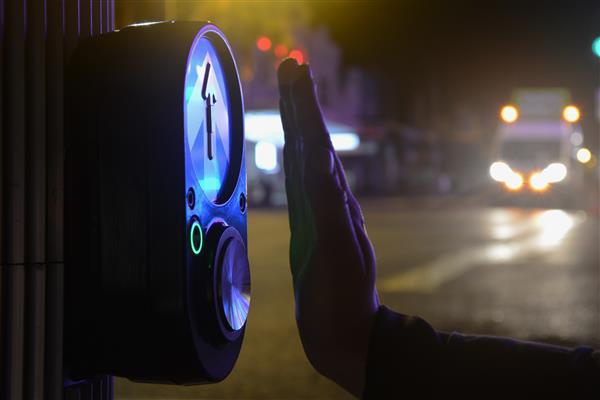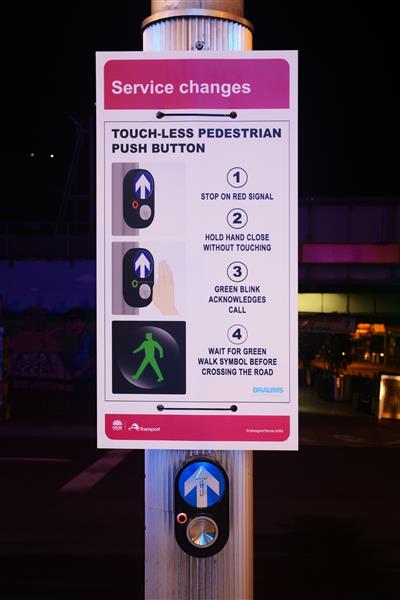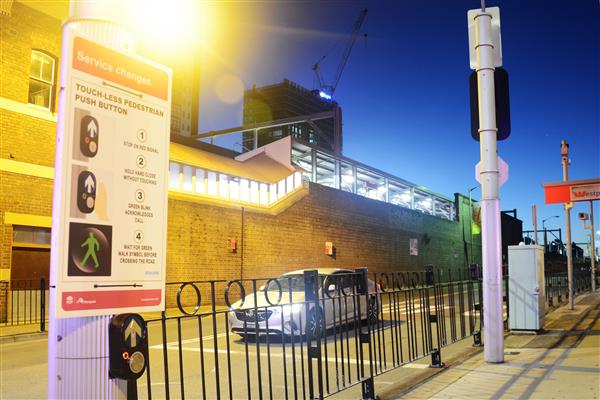In response to an innovation push from RMS in 2018, BRAUMS Managing Director Andrew Bull and his team of engineers designed the BRAUMS Touch-Less Pedestrian Detector.

BRAUMS' First Touch-Less Pedestrian Push Button Installed
BRAUMS & TfNSW Improving Public Safety
Government organisations across Australia are constantly working to improve public infrastructure. As a result of COVID-19, there is now a strong focus on preventing disease transmission among the community.
To help with this, Transport for NSW (TfNSW) have taken prompt action to automate pedestrian crossings across NSW. Since starting the initiative on March 23rd, all signalised pedestrian crossings in Sydney CBD and surrounding areas have now been automated. Working closely with NSW Health, TfNSW have also rolled out automation in over a dozen health precincts across the state, where pedestrian traffic is high, and the number of at-risk individuals is increased.
Concerns with the Current Automated System
While the automation of pedestrian crossings provides benefits to the public in terms of improved hygiene, the current implementation method has two key disadvantages with broader implications for public safety.In the current automated system, pedestrian crossing phases are initiated at fixed time intervals by SCATS® (Sydney Co-ordinated Adaptive Traffic System), Australia’s overarching traffic control system. This means vehicle traffic is stopped at regular intervals to allow pedestrians to cross safely.
As crossing phases in the automated system occur irrespective of pedestrian demand, unnecessary traffic stoppages are inevitable. With this comes the potential for increased traffic congestion and driver frustration, both of which are a safety risk to pedestrians and drivers alike.
Perhaps a more serious concern with the current automated system is that pedestrians are sometimes left waiting for long periods of time without receiving a crossing phase and safe passage across the road. This issue arises when the intersection’s traffic signal controller occasionally loses communication with SCATS®. Normally, during these periods without SCATS® communication, the traffic signal controller would initiate pedestrian crossing phases based on input from the pedestrian push button system. Now that pedestrians are no longer pushing the button, they are left without a crossing phase until SCATS® communication is back online. This is a huge concern, with the potential to cause pedestrian frustration and unsafe crossing behaviour when phases do not occur.

BRAUMS Touch-Less Pedestrian Push Button installed on Burwood Rd, Burwood, NSW
BRAUMS have a Solution
Thankfully, BRAUMS have a solution! The BRAUMS Touch-Less Pedestrian Push Button System returns control of pedestrian crossings back to the public, allowing them to action a crossing phase without having to touch the button. Pedestrians can simply wave their hand in front of the Touch-Less sensor to call for a crossing phase. When the Touch-Less System’s illuminated infrared proximity sensor is triggered, it will change to green to notify users that their call has been actioned.

Newly Installed BRAUMS Touch-Less Pedestrian Push Button in Burwood, NSW
While the Touch-Less System still retains all features of the old familiar system, including a mechanical push button and audio tactile feedback for those with hearing and vision impairment, the added proximity sensor provides a simple, contactless option for all other members of the public.
Because the Touch-Less Pedestrian Push Button utilises the same system currently in use around Australia, it can be fitted to existing sites quickly and easily, without the need for additional space or hardware.
Field Trials Have Already Begun
Being quick to recognise the potential benefits of this new Touch-Less System, TfNSW started a field trial today, 15th June, 2020, installing a number of BRAUMS Touch-Less Push Buttons in Burwood, NSW, which will be monitored closely to gauge user satisfaction and reliability.

BRAUMS Touch-Less Pedestrian Push Button on Railway Pde, Burwood, NSW
While the automated pedestrian crossing initiative has been a necessary step in slowing the potential spread of disease in NSW, the Touch-Less System may prove to be a more suitable alternative in many areas. By putting control back into the hands of the public, BRAUMS’ Touch-Less Pedestrian Push Button System delivers a safe, hygienic, and reliable crossing solution that won’t compromise traffic flow - not only serving the needs of the public, but of Australian Road Authorities as well.
Visit the BRAUMS Touch-Less Pedestrian Push Button product page to learn more.